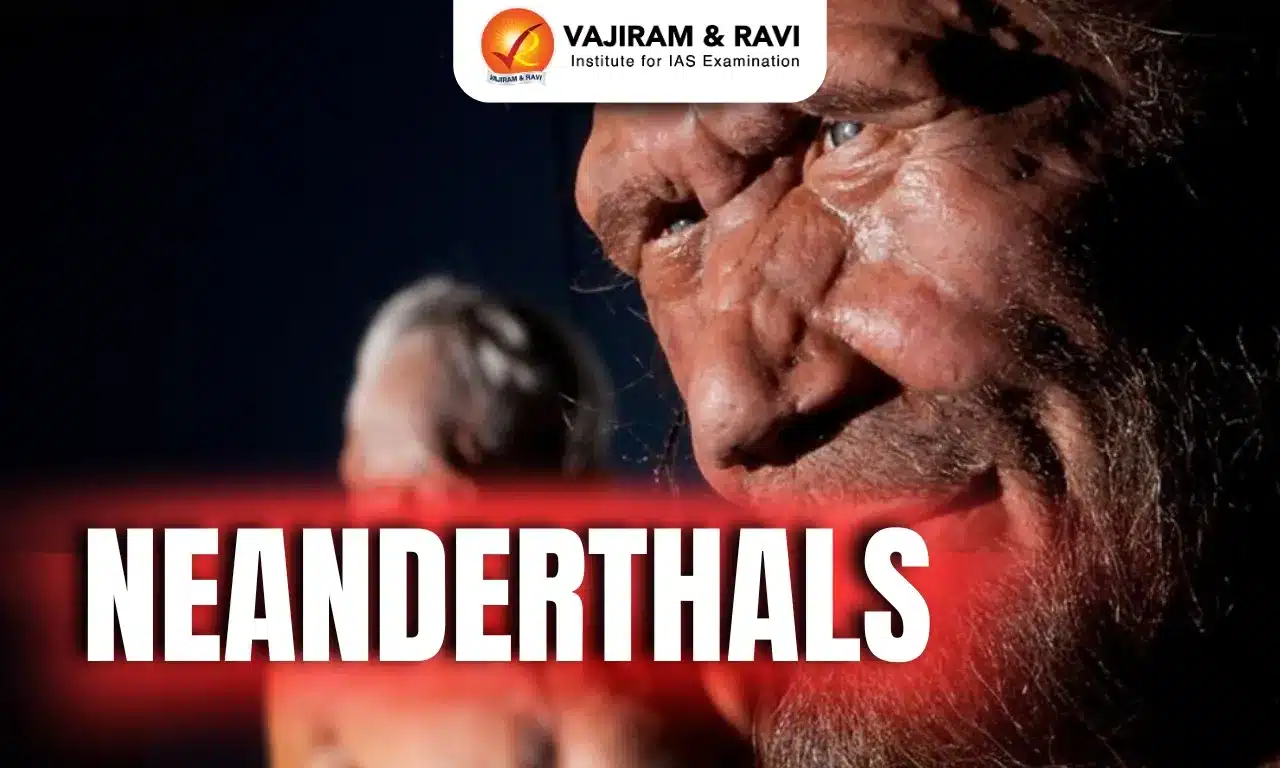Neanderthals Latest News
A recent study supports the view that Neanderthals were not wiped out in a dramatic extinction, but were instead genetically absorbed into the emerging human population over thousands of years.
About Neanderthals
- They were an extinct relative of modern humans once found across Europe, extending into Central and Southwest Asia.
- Species: Homo neanderthalensis
- The name Neanderthal (or Neandertal) derives from the Neander Valley in Germany, where the fossils were first found.
- They are the closest extinct relatives of modern humans (Homo sapiens).
- Scientific evidence suggests our two species shared a common ancestor.
- Neanderthals were closely related to another group of extinct, little-known human relatives called the Denisovans.
- Current evidence from both fossils and DNA suggests that Neanderthal and modern human lineages separated at least 500,000 years ago.
- The last populations of Neanderthals are thought to have died out roughly 40,000 years ago, several thousand years or so after a wave of modern humans migrated deeper into Europe.
- Although they are long extinct, their genes are still present in modern human DNA.
Neanderthals Features
- Some defining features of their skulls include the large middle part of the face, angled cheek bones, and a huge nose for humidifying and warming cold, dry air.
- Their bodies were shorter and stockier than modern humans, another adaptation to living in cold environments.
- But their brains were just as large as modern humans and often larger-proportional to their brawnier bodies.
- Their bones reveal that they were extremely muscular and strong, but led hard lives, suffering frequent injuries.
- Unlike modern humans, Neanderthals didn’t have much of a chin.
- Neanderthals made and used a diverse set of sophisticated tools, controlled fire, lived in shelters, made and wore clothing, were skilled hunters of large animals, ate plant foods, and occasionally made symbolic or ornamental objects.
- Around 300,000 years ago Neanderthals developed an innovative stone technology known as the Levallois technique.
- This involved making pre-shaped stone cores that could be finessed into a finished tool at a later time.
- There is evidence that Neanderthals deliberately buried their dead and occasionally even marked their graves with offerings, such as flowers.
- No other primates, and no earlier human species, had ever practiced this sophisticated and symbolic behavior.
Source: IDR
Last updated on January, 2026
→ Check out the latest UPSC Syllabus 2026 here.
→ Join Vajiram & Ravi’s Interview Guidance Programme for expert help to crack your final UPSC stage.
→ UPSC Mains Result 2025 is now out.
→ UPSC Notification 2026 is scheduled to be released on January 14, 2026.
→ UPSC Calendar 2026 is released on 15th May, 2025.
→ UPSC Prelims 2026 will be conducted on 24th May, 2026 & UPSC Mains 2026 will be conducted on 21st August 2026.
→ The UPSC Selection Process is of 3 stages-Prelims, Mains and Interview.
→ UPSC Result 2024 is released with latest UPSC Marksheet 2024. Check Now!
→ UPSC Toppers List 2024 is released now. Shakti Dubey is UPSC AIR 1 2024 Topper.
→ Also check Best IAS Coaching in Delhi
Neanderthals FAQs
Q1. Neanderthals were found across which regions?+
Q2. Who are considered the closest extinct relatives of modern humans?+
Q3. Neanderthals and modern humans are believed to have diverged at least how many years ago?+
Q4. What is the scientific name of Neanderthals?+
Tags: neanderthals prelims current affairs prelims pointers upsc prelims current affairs

















